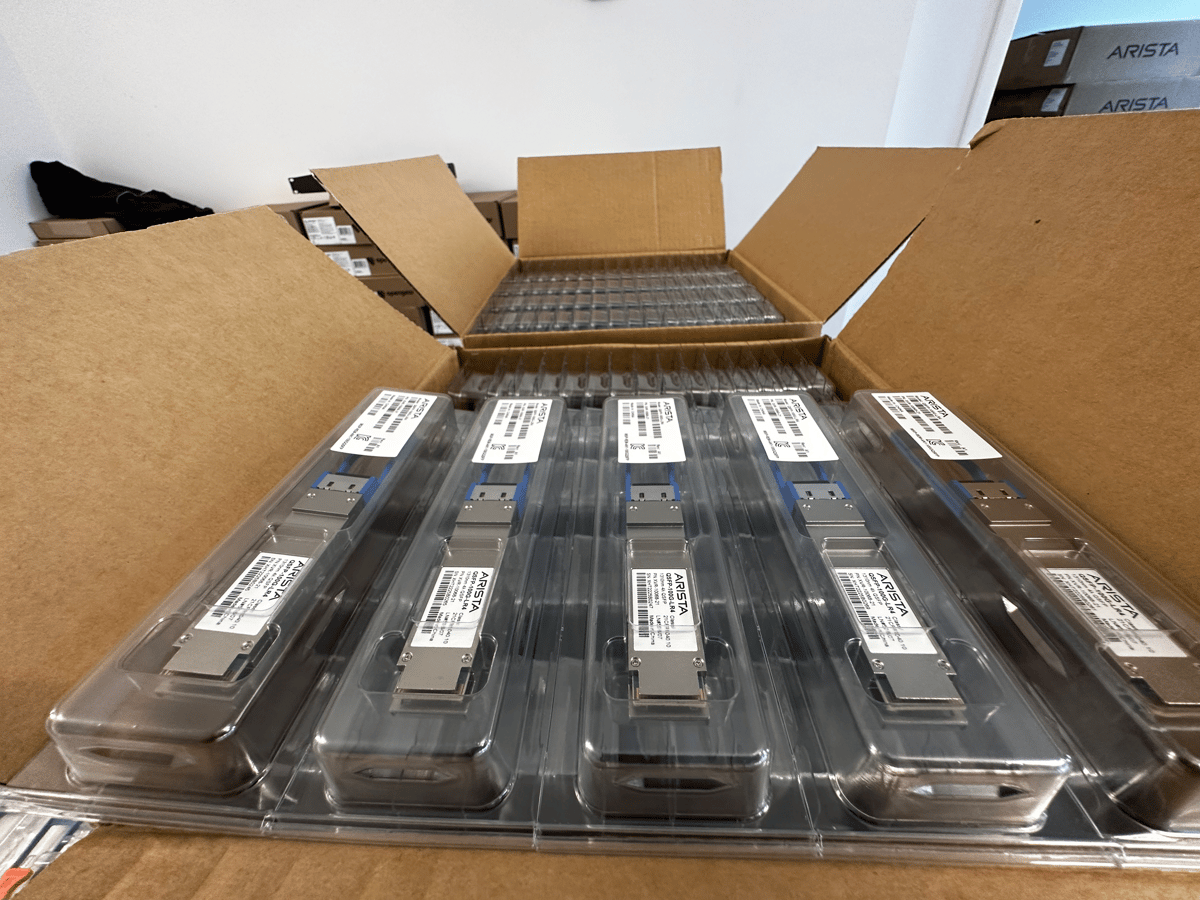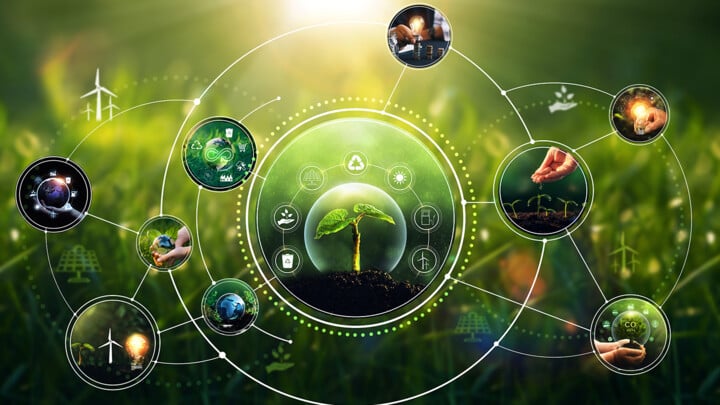“When we founded Inter.link, we decided that environmental sustainability was going to be a foundational value of the company.” – Theo Voss, CEO and Co-Founder of Inter.link.
“This is because we didn’t just want to build network services that are better for business. We wanted to build services that are better for the world. And addressing climate change is one of the most vital ways to do that.
“As a result, we’ve achieved carbon neutrality now, rather than waiting for 2035 or even later.”
DEFINING SUSTAINABLE IT FOR NETWORK SERVICES
Ernst and Young defines Green IT (another term for sustainable IT practices) as, “IT products and services that enable organizations to reduce environmental impact, including the impact of IT energy consumption.”
Network services are one part of a holistic approach to sustainability in enterprise IT operations. Every component you buy, every IT systems lifecycle, from hard IT assets like laptops and network gear, to services such as cloud computing and other types of cloud providers, has an IT footprint that affects your sustainable IT strategy.
But how does sustainable IT impact business processes and goals specifically for network services?
The network industry has only been taking sustainability seriously in recent years, trying to inject fresh sustainability initiatives into business models which are decades old and rely on hardware which often does not fit the requirements of green IT.
Inter.link is one of the Network as a Service providers utilising the cloud model, and has been dedicated to sustainability from the start, so we built on a greenfield with a unique hardware solution. In addition, we have worked closely with suppliers throughout the whole product life cycle to keep carbon emissions at a minimum.
SO WHAT DOES IT MEAN TO BE SUSTAINABLE?
Is being sustainable just down to carbon neutrality? Is it net zero? Is it supplier management and carbon offsets? Is it certifications (we’ve achieved B Corporation and the PAS 2060certification already for example)?
The answer is ultimately, sustainability isn’t any one of those individual things. Rather, it’s a holistic and long-term commitment to accountable, sustainable business practices that help reduce Greenhouse Gas Emissions. In this blog, we’ll share what makes Inter.link sustainable.

Unboxing our Arista hardware at the beginning of 2023
3 PRINCIPLES AND 1 GOAL IN OUR QUEST FOR LONG-TERM SUSTAINABILITY
To set the right objectives for sustainability, it is critical to follow a set of principles. Our principles underpin internal processes and help guide our product roadmap (which currently includes IP Transit and IP Access, DDoS Protection, Flex Ethernet, and Network Functions); most importantly, they ensure organisational alignment and make prioritisation much easier.
HOLISTIC
Becoming a sustainable organisation requires balancing multiple initiatives, and it is important to consider your entire business ecosystem in full. How do other organisations connect with you? Do the values of suppliers match with yours? What kind of impact do suppliers have on your sustainability goals?
ITERATIVE
Striving to be sustainable is a marathon, not a sprint. It is a continuous, iterative cycle where you repeat similar steps with the main aim of reducing your footprint. It’s also more efficient to have an all-encompassing approach to corporate responsibility ESG (Environment, social governance), making sure it is valued across the entire organisation, and shown in even the smallest habits.
TIME-PRIORITISED
In your sustainability strategy you can distinguish between the low-hanging fruit tasks that can make change fast and easy, and there will be tasks that take more time, energy, and investment and usually require a bigger change to make long-lasting impact. Remember that energy efficiency isn’t just about electricity!
NET-ZERO IS THE GOAL (I.E. ZERO EMISSIONS IS IMPOSSIBLE)
An operating company will never reach literally zero emissions, but can always strive to create as little footprint as possible and strive for being net zero.
As new IT infrastructure technologies appear and more accurate ways of measuring footprints are introduced, a company can always look to be more sustainable than in previous years and further develop alongside new innovations and standards.
“If you are ambitious in your sustainability mission, you can also aspire to be ‘climate positive’.
“This is where, through additional projects, the company is ‘saving more greenhouse gas emissions than you produce’ – this is sometimes used to talk about how humanity can rebalance the already produced emissions and not only slow but counterbalance global warming ”
Nicol Nógrádi
Special Projects Manager, Inter.link
INTER.LINK’S TANGIBLE SUSTAINABILITY INITIATIVES
Let’s get into the detail of what Inter.link is actually doing (and has done) to be sustainable.
SUSTAINABILITY POLICIES, PROCESSES, AND TRAINING
We knew from the company’s beginning that we wanted to become B Corp certified and wanted to put great emphasis on sustainable values, so most of our processes and policies were developed with this in mind. We have internal sustainablility trainings for employees, and share our insights publicly via written or spoken content such as conferences and blog articles.
AUTOMATED MEASUREMENT
From our first operational year onwards we have had automated footprint measurement for not only Scope 1 and 2 but also Scope 3. This creates transparency and helps us set the right goals. The need for goal-focused measurement cannot be understated, especially since Deloitte’s research has found that 70% of businesses aren’t yet ready to meet their reporting obligations.
SUSTAINABLE SUPPLY CHAIN
We continually evaluate future suppliers and compare metrics to select suppliers with similar targets to ours, or suppliers that are already carbon neutral. In addition, we prioritise buying products that have a life cycle assessment done already and consciously choose our hardware in a way that minimises footprint.
ACCOUNTABILITY VIA CERTIFICATIONS
Certifications are not the be all and end all for sustainability, however, they are vital indicators that sustainability initiatives are working, and this is positive for employee morale as well as for investors, partners, and customers. Our strong stance on corporate responsibility and the ESG topic is shown by our B Corporation certificate and PAS 2060 certification for carbon neutrality.
RENEWABLE ELECTRICITY IN DATA CENTERS
We are currently pushing to increase the percentage of renewable electricity in data centers where our network points of presence (PoPs) are located. The energy consumption of data centers cannot be ignored and it is critical to make more of that sourced from renewable energy sources.
OUR CURRENT FOCUS FOR SUSTAINABILITY
We have come a long way already regarding sustainability, as we are already measuring our footprint and we also compensate our emissions with quality carbon credits. However, the journey is an ongoing one, and currently we are working on further reducing our footprint.
Carbon neutrality is the first step, and now we have our eye on the new target, which is net zero. For this we need to make sure that we are doing all the reductions we can, so our current focus is on Scope 3 – the supply chain emissions – as this is our highest source of emissions.
The key sustainability focus of Inter.link is on reducing our carbon footprint. This is actually a relative footprint because carbon intensity takes into consideration the company growth.

WHAT MAKES INTER.LINK’S SUSTAINABLE TECHNOLOGY UNIQUE?
The above points show why sustainability is important to us, what we have achieved so far, and what we are currently prioritising to maintain our standards as a sustainable organisation, but what makes us unique in this area?
TIMING
One obvious factor that makes us unique is timing. Most IT vendors are placing their measurable sustainability goals out at least a decade or more.
DEDICATION
A second key factor that makes us unique is that we are not legally required to complete any of these sustainability initiatives but we are doing them anyway because sustainability is one of our foundational values.
The Corporate Sustainability Reporting Directive (CSRD) currently requires companies operating within the EU with more than 500 employees to report on their emissions, and SMEs like Inter.link are only impacted from the financial year of 2026 onward. We not only already have a complete overview of all our Scopes already, but also offset them in 2022.
SUSTAINABILITY IS A JOURNEY
For Inter.link ‘sustainable’ is not a mere buzzword or about brand image. It is a standard we continually strive to maintain so that we deliver network services that are better for business and for the world.
Our sustainability efforts have delivered results so far, not just in terms of energy efficiency and reducing emissions, but also internal and external cost savings, however becoming and staying a sustainable business is a long journey.
CHOOSING A CARBON NEUTRAL VENDOR
Considering organisational goals and growing legal requirements, it saves time and headaches to work with a carbon neutral vendor because it does not add to your footprint. For example, we have already taken care of offsetting ourselves.
If you’re a CIO or IT leader, including Inter.link in your information technology vendor portfolio can give you a new green option in your IT strategy. If you are interested in sustainable Network as a Service, please get in touch.